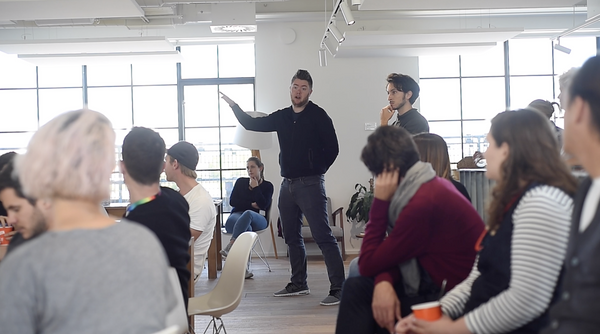
Workshops sound like a great idea...until everyone gets in a room together and the creative juices dry up faster than the desert in July. Why can it feel so hard to manifest creative ideas when the ingredients all seem to be there? Because the design of a workshop experience is just as important as the people you have in the room.
Running an effective workshop hinges on collaboration and trust and creating an environment where everyone is invited to share ideas and get hands on.
The Exploratorium, an innovative science center in San Francisco, has honed the design of their experiential learning programs over the last 50 years and hosts workshops around the world to help others bring creative projects to life. Today, eight in 10 science museums globally have Exploratorium-designed learning experiences, and the museum reaches 200 million people globally each year.
Chris Flink, executive director of the Exploratorium, joined us on the Creative Confidence Series podcast to chat about the creative culture at the museum. Here are his tips for running creative workshops that will lead to innovative, new ideas.
Treat people as contributors
There are times when you may need to do a briefing or present ideas to a group where the conversation is mostly one way. A creative workshop is not one of those times. It can be a trap to think of participants as pure consumers of information, Chris says. Treat them as contributors and think of the workshop as a conversation.
Embrace a learning mindset
As a workshop facilitator, you set the tone for the entire group. Be open to the influence of your participants and welcome new ideas that may veer from the plan you created for the day.
“Create the space to be open to their influence and what you’re going to learn from them,” Chris says. “Take a learning posture instead of a teaching posture.”
Try kicking off your next creative workshop with an activity from the Exploratorium’s Science Snacks, free educational activities created to empower educators in the classroom. Shift your perspective by looking at two Michelle O photos, spark your curiosity with sound cups, or think like a scientist to analyze rainfall patterns.
Don't script it
“If you’re trying to script out a workshop completely, you’re probably mostly pushing in a single direction,” Chris says. Instead, design for the context, not the script. Plan out elements of the day, but leave room for diverging moments—times when brainstorms go far and wide and no crazy ideas are off limits—before beginning to narrow back in on the best ideas.
Make it experiential
At the Exploratorium, almost every exhibit has a hands-on element. “Learning sticks more when it’s experiential,” Chris says. Instead of telling your participants what to think, bring them along on a journey of discovery.
“Avoid the temptation to just present the information you want to come across,” he says. “But rather create an experience that allows your users to find that information on their own and discover it on their own. That makes it much more personal and makes it theirs.”
Begin by framing a question and inviting your participants to brainstorm with drawings or physical prototypes built out of readily available materials like paper and tape.
Learn more about how the Exploratorium fosters a culture of creativity both for visitors and within their organization in our Creative Confidence Series conversation with Chris.
Get more tips on facilitating collaborative work to unlock innovative ideas in our online course, Cultivating Creative Collaboration.
- choosing a selection results in a full page refresh
- press the space key then arrow keys to make a selection



